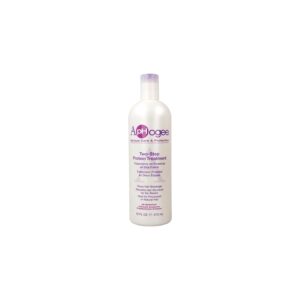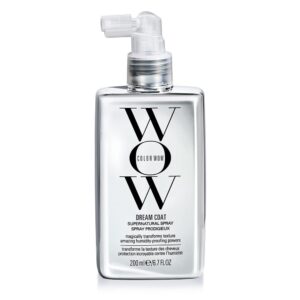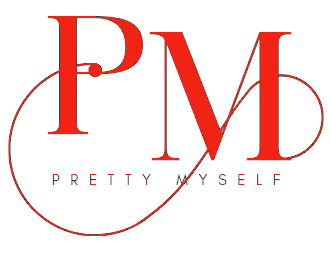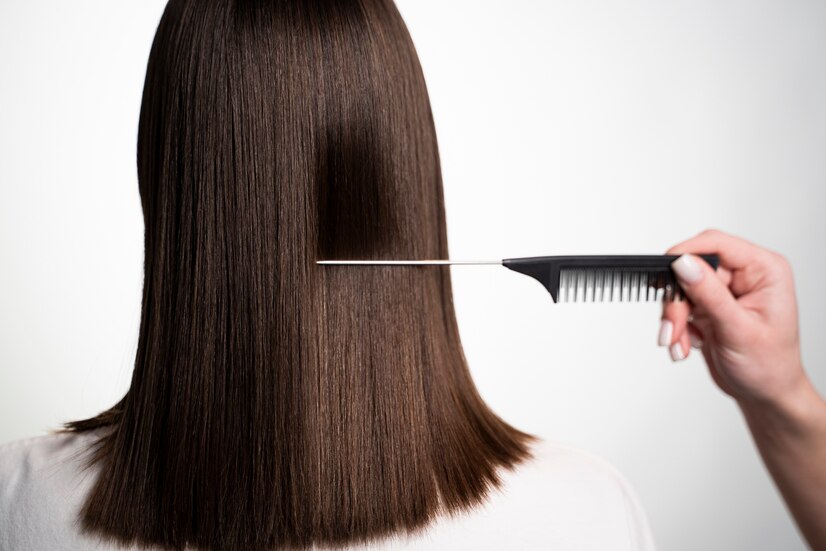Demystifying the Types of Keratin Treatment for Hair
Page Contents
- Demystifying the Types of Keratin Treatment for Hair
- Types of Keratin Treatment for Hair
- Precautions while taking types of Keratin Treatment
- Keratin Hair Treatment Side Effects
- Is Keratin Treatment Good for Hair
- Does Keratin Treatment Damage Hair
- To prevent damage from keratin treatments:
- Keratin Hair Treatment Products
- Is Keratin Treatment Good for Hair Loss
- Keratin Treatment at Home
- FAQs for taking types of Keratin Treatment
Keratin treatments have become a popular way to smooth, straighten, and restore shine to hair. But with so many types of keratin treatments for hair available, it can get confusing understanding the differences between them. This article will overview the main types of keratin treatments for hair and what makes each one unique.
Types of Keratin Treatment for Hair
One of the first things to understand about types of keratin treatment for hair is that they contain a protein called keratin. Keratin is the key structural component that makes up most of our hair and nails. The keratin treatments work by applying a formula that penetrates the hair cuticle to temporarily strengthen, repair damage, and coat the existing keratin in hair strands.
Types of keratin treatment for hair include the Brazilian, express, rebooting, strengthening, and color-protecting treatment options. Each has its main function to deep condition, smooth, safeguard color, or speed up the straightening process. Many salons offer customized versions as well combining ingredients for these popular types of keratin treatment for hair.
The most popular type is the Brazilian keratin treatment for hair, sometimes called an escova progressiva or Botox for hair treatment. This intense conditioning treatment aims to soften curls, repair damage, and leave lasting smoothness and shine for 2-5 months. These types of keratin treatment for hair use a high concentration of keratin along with other nourishing ingredients like oils, silicones and cellulose derivatives. Results last as long as the treatment stays on the hair strands until it wears off during washes.
For those wanting sleek and straight hair fast, Express keratin treatments for hair deliver quicker results in about 1-2 hours but only last 1-4 weeks. The types of keratin treatment for hair in the express formula often use higher concentrations of formaldehyde derivatives to straighten hair quicker by rebonding disulfide bonds.
Rebooting keratin treatments for hair aim to restore and renew hair from past chemical or environmental damage like chlorine, sun exposure, smoking or other stresses. These nourishing types of keratin treatment for hair use proteins, amino acids, oils and antioxidants to resurface the cuticle, sealing in moisture and strength.
Strengthening keratin treatments for hair focus more on repairing damaged areas like split ends or porous sections prone to breakage. These fortifying types of keratin treatment for hair coat strands to make them more resilient, protecting against heat styling and environmental aggressors over the following months.
Lastly, Color-safeguarding keratin treatments for hair shield hair color from fading quickly while also smoothing and softening the strands. These color-locking types of keratin treatment for hair create a protective barrier to boost color retention by up to 40% while making hair easier to detangle and style.
It’s best to get a consultation to evaluate your hair goals and condition to choose which type of keratin treatment for hair suits your needs. Many factors from lifestyle to hair type and texture help determine the ideal types of keratin treatment for hair. Professionals can assess these details before customizing the right formula, method and aftercare.
Here are some suggestions for keratin treatments you can do at home for your hair:
Aphogee Two Step Protein Treatment

Amount needed: One 2 oz packet
How to use: Apply evenly throughout your hair after shampooing. Leave on for 10-15 minutes under a hair drying hood or heat cap. Rinse out thoroughly. Follow with a hydrating deep conditioner. Use 1-2 times per month.
Brazilian Blowout Acai Deep Conditioning Masque

Amount needed: Apply a quarter-sized amount if you have short hair or up to 2-3 oz for long, thick hair
How to use: Evenly distribute through washed, towel-dried hair. Put on a shower cap and leave in for 10-15 minutes with low heat from a hair dryer or heat cap. Rinse out thoroughly. Can be used 1-2 times per week.
Keraology Keratin Hair Reconstructor

Amount needed: One 2 oz packet
How to use: After shampooing, apply all over damp hair. Wait 2 minutes then rinse out. Follow with conditioner. Use 1-2 times per week.
Color Wow Dream Coat Supernatural Spray

Amount needed: 6-8 sprays for shoulder length hair
How to use: Shake well. Spray through damp, clean hair evenly then comb through. Style as usual. Reapply whenever needed.
I’d recommend starting slow with once a week use for any at-home keratin treatments and adjusting as needed. Always follow instructions and perform a strand test first to test hair integrity if using chemical treatments.
Precautions while taking types of Keratin Treatment
While keratin treatments offer many hair benefits, there are some precautions to consider with these popular types of keratin treatment for hair. Some keratin formulas contain formaldehyde, which can irritate eyes, skin or lungs in the fumes released during the sealing process with high heat. Pregnant or nursing women should avoid exposure. Ask your stylist to use a low-formaldehyde treatment made with glyoxylic acid which still smooths hair effectively.
Proper ventilation, protective eyewear and neatly sectioned hair help reduce exposure. Also be aware these types of keratin treatment for hair require 72 hours avoiding washing or styling to allow the keratin to fully set in strands. Follow all aftercare instructions carefully to get the longest lasting results from the treatment.
Overusing keratin treatments can lead to protein overload causing brittle or easily broken hair. Give hair an occasional break by using reparative masks or oils in between keratin sessions. Getting treatments too frequently can also lead to flat, lifeless hair over time. Allow the previous keratin treatment for hair to fully grow out before getting a touch up on regrowth.
Keratin Hair Treatment Side Effects
Keratin treatments can make hair look smoother, straighter, and shinier. However, these treatments also come with potential side effects. Some of the common side effects of keratin hair treatments include:
- Dryness and brittleness – The strong chemicals used in keratin treatments can make hair dry, brittle and prone to breakage, especially if not properly maintained. This can worsen existing dryness or damage.
- Hair loss – Improper application or overuse of keratin treatments can damage follicles and cause excessive hair shedding or thinning. The harsh chemicals interfere with the hair growth cycle.
- Scalp irritation – Some people may experience an itchy, irritated scalp after getting a keratin treatment. This is usually due to an allergic reaction or chemical burns from the treatment.
- Fading and discoloration – Keratin-treated hair may fade quicker and lose its color faster. The chemicals strip away the hair’s natural pigment. This causes treated hair to look dull overtime.
To minimize side effects, wait 3-4 months between treatments and avoid over-treating damaged or fragile hair. Always do a strand test beforehand. Use sulfate-free shampoos and conditioning masks to combat dryness associated with keratin treatments.
Is Keratin Treatment Good for Hair
When properly done, keratin hair treatments can provide certain benefits:
- Smoothing frizz and unruly curls – Keratin treatments work by sealing the hair cuticles to temporarily straighten curly or wavy hair textures. This helps smooth out frizz and unmanageable curls.
- Enhancing shine – The treatment coats the hair strands to make them look glossier and healthier. So hair appears shiner and less dull after the service.
- Easing styling – The smoothing effect of keratin makes hair more slippery and easier to comb through. This allows faster blow drying and easier straightening or curling post-treatment.
However, to reap these benefits without damage, a reputable stylist should do the treatment using a milder formula without formaldehyde. Plus, the hair should be sufficiently strong and healthy first, not over-treated. Appropriate aftercare is also essential.
When overdone or misused on damaged hair, keratin treatments can do more harm than good. The harsh chemicals compromise hair health while results are only temporary. Regular conditioning is a safer way to achieve smoother, frizz-free hair.
Does Keratin Treatment Damage Hair
While keratin sounds nourishing, typical salon treatments actually use powerful chemicals that can damage hair. Here’s how:
- Breaking down structure – The proteins and chemicals deeply penetrate and break down the internal bonds of the hair strands to achieve temporary straightening. This leads to brittleness.
- Stripping nutrients – Chemicals like formaldehyde remove moisture and proteins like keratin from within the hair shaft, leaving it dry and porous over time.
- Interfering with growth cycles – Repeated exposure to harsh ingredients may impact the follicles and normal hair growth patterns negatively.
To prevent damage from keratin treatments:
- Avoid overtreating damaged or thin hair
- Use less harsh formaldehyde-free formulas
- Extend time between treatments to 6 months
- Shampoo less frequently and use intensive hair masks
- Get a cepilho treatment to replenish moisture post keratin procedure
When done correctly and moderately, healthier hair types can benefit from keratin straightening without significant damage. But chemical relaxing is always taxing for the hair to some degree.
Keratin Hair Treatment Products
There are various at-home keratin treatment products available in India, like:
Keratin Complex Smoothing Therapy: This contains keratin proteins, peptides and natural oils to smooth hair and tame frizz for upto 4 months. Safe for chemically treated hair.
L’Oreal Serie Expert Keratin Smooth Shampoo and Mask: Infused with Pro-keratin and silk extracts, these add elasticity and shine while gently cleansing.
Schwarzkopf Bonacure Repair Rescue Sealed Ends: This serum coats damaged ends with keratin and phospholipids to prevent splits and breakage. Silicone-free.
Wella SP Luxe Oil Keratin Restore Mask: With marula and almond oils, it intensely nurtures each strand, smooths cuticles and protects from heat tools.
Livon Serums: Livon hair serums contain Hydrolyzed Keratin Protein to control frizz, repair damage, detangle and give natural softness and protection. Silicone-free formulations available too.
When choosing keratin hair products, read labels carefully. Opt for ones with less harsh chemicals, safe ingredients, and nourishing oils and silicones. Using too many, or ones with high formaldehyde, can damage hair overtime like salon treatments.
Is Keratin Treatment Good for Hair Loss
Keratin treatments are not an effective solution for hair loss on their own. While they may temporarily thicken thinning hair, they do not treat the underlying causes and can worsen hair fall.
The harsh chemicals like formaldehyde, high heat application, and the short-term effects counteract any perceived benefits for hair loss.
In fact, overusing keratin treatments often damages follicles and causes more thinning or breakage. The procedures interfere with the natural hair growth cycle and cannot prevent age or hormone-related baldness.
Other safer and more effective approaches for managing hair loss include:
- Nutrient-rich diet and supplements like biotin, iron, zinc, etc. This strengthens hair from inside-out.
- Gentle hair care – Avoid harsh chemicals, heat tools, tight hairstyles that place stress on roots.
- Scalp massage using essential oils to improve blood circulation.
- Minoxidil topical solutions to stimulate growth.
- Medications like finasteride or spironolactone to inhibit DHT production, based on cause.
- PRP injections done safely by certified trichologists.
Consult a trichologist and get to the root cause before trying vitamins, topicals, light therapies, PRP, etc under expert guidance. Relying too much on keratin smoothing treatments may only camouflage hair fall temporarily while causing long-term damage.
Keratin Treatment at Home
With proper precautions, keratin smoothing treatments can be done at home using safer readymade kits with milder formulas. These are convenient alternatives to harsh salon services.
When choosing home keratin treatment products, preferable options include:
Formaldehyde-free smoothing kits – Brands like SoftSheen Carson Optimum Salon Haircare Amla Legend, trained by a professional firstly.
Natural keratin kits with plant extracts – Avoid chemical options with ample natural keratin instead like The Ine Beaute Anti Frizz kit with argan oil, keratin, shea etc.
Customizable treatments like Step 3 Keratin – This allows modifying the formula as per hair’s current condition.
To do it safely at home:
- Do a strand test for any irritation before full application.
- Carefully follow all instructions of the particular brand.
- Apply product evenly using a tinting brush and comb.
- Rinse thoroughly and blow dry on low heat before flat ironing in sections.
- Repeat washing and flat ironing for 2-3 days consecutively for longer lasting results.
- Use a good conditioner post-treatment and avoid other chemical services for some weeks.
- Apply a keratin hair spray or serum to enhance smoothness between washes.
When done correctly using gentle, customized home keratin treatment kits, results can last 2-4 months. Take care not to overdo it, and maintain hair health with nourishing products. Seek help from a professional if unsure about at-home application.
FAQs for taking types of Keratin Treatment
What is the cost of keratin treatments?
On average keratin treatments range from 10000/-INR-50000/-INR based on the hair length and thickness. Express versions cost less while Brazilian treatments giving longer lasting results for 2-5 months have higher price tags. Custom or salon-branded versions also boost costs.
How long do results last?
Keratin treatment for hair results can last 1-5 months depending on the formula, your hair type and adherence to aftercare. Some types fade faster on hair that is frequently washed, heat styled or exposed to chlorine or saltwater which can strip the keratin coating off strands.
Are keratin treatments safe?
When proper precautions are taken, keratin treatments pose minimal risks for most people but heat and chemical straightening isn’t recommended for pregnant or nursing women. Low-formaldehyde options using gentler ingredients like glyoxylic acid can reduce irritation risks. Proper ventilation and eyewear also minimize exposure.
What is the aftercare?
Types of keratin treatment for hair require waiting 72 hours before washing or styling after the procedure to allow the active ingredients to fully penetrate and set in hair. After that continue using sulfate-free shampoos and conditioners to safely maintain results longer. Limit heat styling when possible and use heat protectants to prevent damage to the keratin layer deposited on hair strands.
Wrapping it Up
From the popular Brazilian treatment to fast express options, keratin smoothing services offer several types to straighten, strengthen and repair all hair types. These in-salon treatments can help manage frizzy hair, safeguard color treated locks all while making hair softer and more vibrant. When carefully done by a trained professional using proper techniques and aftercare, keratin treatments can be a useful solution for problem hair. But avoiding overuse and chemical over-processing ensures hair stays healthy over time. Considering all factors with your stylist helps determine which of the types of keratin treatment for hair best fits your goals, budget, lifestyle and locks.



